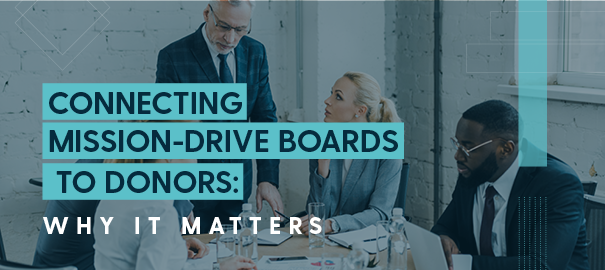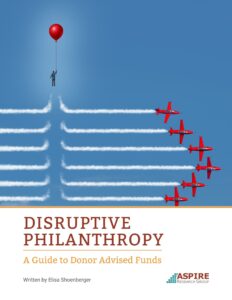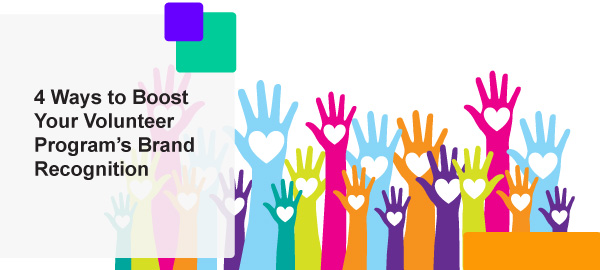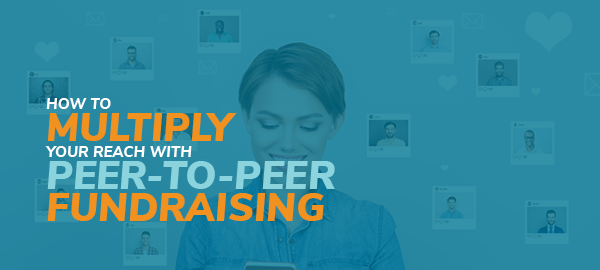
To build a volunteer program that supporters want to get involved with, you need to focus on each part of the program, from your recruitment strategy to your branding approach.
Looking for tips on how to make your program as effective as possible? Good news: There are tried-and-true best practices you can follow. Let’s take a look at what to do and what not to do when creating your nonprofit’s volunteer program.
Do: Create a targeted recruitment strategy.
A targeted recruitment strategy increases your marketing team’s return on investment (ROI) because you’ll connect with audience members who are most likely to be interested in your volunteer program rather than casting a wide net and hoping to engage one or two volunteers.
Reach out to people who have already expressed interest in your organization and may be the right fit for your volunteer program. These individuals may include:
- Lapsed volunteers
- Social media followers
- Email subscribers
- Past event attendees
- Donors
After you identify these individuals, send them messages that resonate with their interests. For instance, you might send your lapsed volunteers a message saying “We miss you! Want to get involved in the work we’re doing today? Here are a few upcoming activities that we think are the right fit for you.” You can also create social media posts highlighting your program’s opportunities and benefits to give followers a sense of how they can and why they should participate.
Finding new volunteers is similar to reaching out to new donors. Both processes require connecting with your prospective supporters and highlighting the aspects of your organization that will appeal to them the most.
You can even use the same tools, such as your donor management software, to engage volunteers. Your donor management software or donor database should contain information about not only your donors, but also your past event attendees, lapsed volunteers, and other individuals who have engaged with your nonprofit over the years. This tool will help you collect contact information for prospective volunteers and create communication strategies to reach out to them.
Don’t: Neglect volunteer safety.
Safety should be your number one priority when planning your volunteer opportunities. Consider things like this when choosing how your volunteers can help you carry out your mission:
- Physical safety: Although it may seem obvious, it’s worth the reminder: The activities you plan should be safe to do. If there is a risk of injury—like when building a house for a family in need—provide a thorough training process so all volunteers feel comfortable using your equipment or carrying out specific responsibilities. You should also have them read, agree to, and sign waivers to highlight the potential risks of volunteer activities and protect your organization from liability.
- Cybersecurity: If you offer online registration tools and/or virtual volunteer opportunities, keep volunteers’ personal information safe through airtight cybersecurity practices. These practices include requiring complex passwords for your online registration system, such as using a mix of character types and requiring that the password have a minimum number of characters. If you accept credit card information from volunteers, your payment system should be PCI compliant. That means it should align with established security standards.
Poor security practices, whether in-person or virtual, can leave a lasting negative impression on your volunteers and expose them to unnecessary risk. On the other hand, emphasizing safety measures will provide volunteers with an experience that builds their trust in your nonprofit.
Do: Consider volunteers’ interests and preferences.
Your volunteers likely have a wide range of life experiences and skills. That’s why you should offer a variety of volunteer opportunities.
According to Double the Donation’s volunteer management guide, volunteering can take many forms, including:
- Event volunteering
- Skilled volunteering (including providing specific services like PR assistance, legal guidance, or accounting support)
- Administrative work
- Advocacy
Conduct surveys to gather information about the types of volunteer opportunities that supporters are most interested in, whether it’s the ones listed above or opportunities unique to your organization’s work. Then, assign the volunteers to the opportunities you know they would be best suited to do.
Don’t: Bore your volunteers.
Your volunteer opportunities should be closely tied to and help make an impact on your organization’s overall mission. By involving volunteers in hands-on projects that directly support your goals, they’ll be more engaged and fulfilled.
For example, if your nonprofit runs a community kitchen for people in need, assign your volunteers different prep tasks so they know they’ve helped put food on the proverbial table. If your organization is an animal shelter, allow volunteers to walk and bathe pets and introduce people to them at adoption events.
Even when you’re completing routine tasks like stapling pamphlets or sorting canned foods, make your volunteer opportunities more engaging by adding a fun twist. You might play upbeat music or challenge volunteers to sort as many cans as possible, then give a prize to the winning team or individual.
Do: Brand your volunteer program.
Your nonprofit’s brand gives audience members an idea of your mission, purpose, and message. Branding your volunteer program can play a similar role in introducing these new opportunities to supporters.
Your volunteer program’s brand should be a variation of your organization’s primary brand, using some of the same elements so supporters understand that the two are related. As you design the program’s brand, you might use the secondary colors in your brand color palette or a variation of your main logo.
Make the program distinct from your nonprofit’s other activities by giving it a unique name. For instance, if your volunteer program is focused on local tree conversation, you might call volunteers “Tree Defenders” or “The Tree Team.”
Branding your nonprofit’s volunteer program helps you increase program awareness. It can also give your volunteers a sense of community, especially when you offer them branded merchandise like matching t-shirts.
Don’t: Pigeonhole volunteers.
You may find yourself only sending information about upcoming volunteer opportunities to your growing volunteer pool. However, volunteers might be interested in supporting your nonprofit in other ways as well.
Promoting those other opportunities will help your volunteers become even more invested in your mission and inspire them to have a greater impact. Volunteers may also be interested in:
- Donating
- Participating in peer-to-peer campaigns
- Attending events
- Advocating on your behalf
By sending your volunteers information about different ways to engage with your organization, you can appeal to their desire to get more involved. Highlight these opportunities using your social media posts and emails.
Do: Ask volunteers for feedback.
Build your volunteer program with volunteers’ preferences in mind every step of the way. If you’re uncertain about what your volunteers think, just ask!
Show volunteers that you care about listening to and implementing their feedback by sending them a post-volunteer event survey. Ask questions such as:
- On a scale of 1-10, how would you rate the volunteer experience?
- Did you feel the training process adequately prepared you for the experience?
- Would you participate in our program again? Why or why not?
- Would you recommend our volunteer program to a family member or friend?
Use volunteers’ responses to adjust your program strategy and let volunteers know how you’re incorporating their feedback. For example, send an email summarizing three to four key trends that emerged from a recent batch of surveys and how your organization plans to adjust your upcoming opportunities accordingly.
Don’t: Forget to show appreciation.
Just as you steward your donors, you must also actively build relationships with volunteers to retain them for the long haul. An effective volunteer stewardship strategy starts with showing your appreciation for your volunteers.
Here are a few volunteer appreciation ideas to incorporate into your program:
- Send thank you emails after each opportunity summarizing what your volunteers accomplished and how they helped your mission.
- Highlight volunteers’ accomplishments on social media and via your email newsletters.
- Send volunteers thank you gifts, such as free merchandise or gift cards.
Expressing gratitude for volunteers is crucial for improving your volunteer retention rate. This will help you increase your ROI when it comes to finding new long-term volunteers and expanding the program in the future.
By following these tips, you should be able to build a strong, sustainable volunteer program that engages supporters and helps your organization work more efficiently toward its mission.
About the Author
Jay Love
Co-Founder and current Chief Relationship Officer at Bloomerang
He has served this sector for 33 years and is considered the most well-known senior statesman whose advice is sought constantly.
Prior to Bloomerang, he was the CEO and Co-Founder of eTapestry for 11 years, which at the time was the leading SaaS technology company serving the charity sector. Jay and his team grew the company to more than 10,000 nonprofit clients, charting a decade of record growth.
He is a graduate of Butler University with a B.S. in Business Administration. Over the years, he has given more than 2,500 speeches around the world for the charity sector and is often the voice of new technology for fundraisers.














